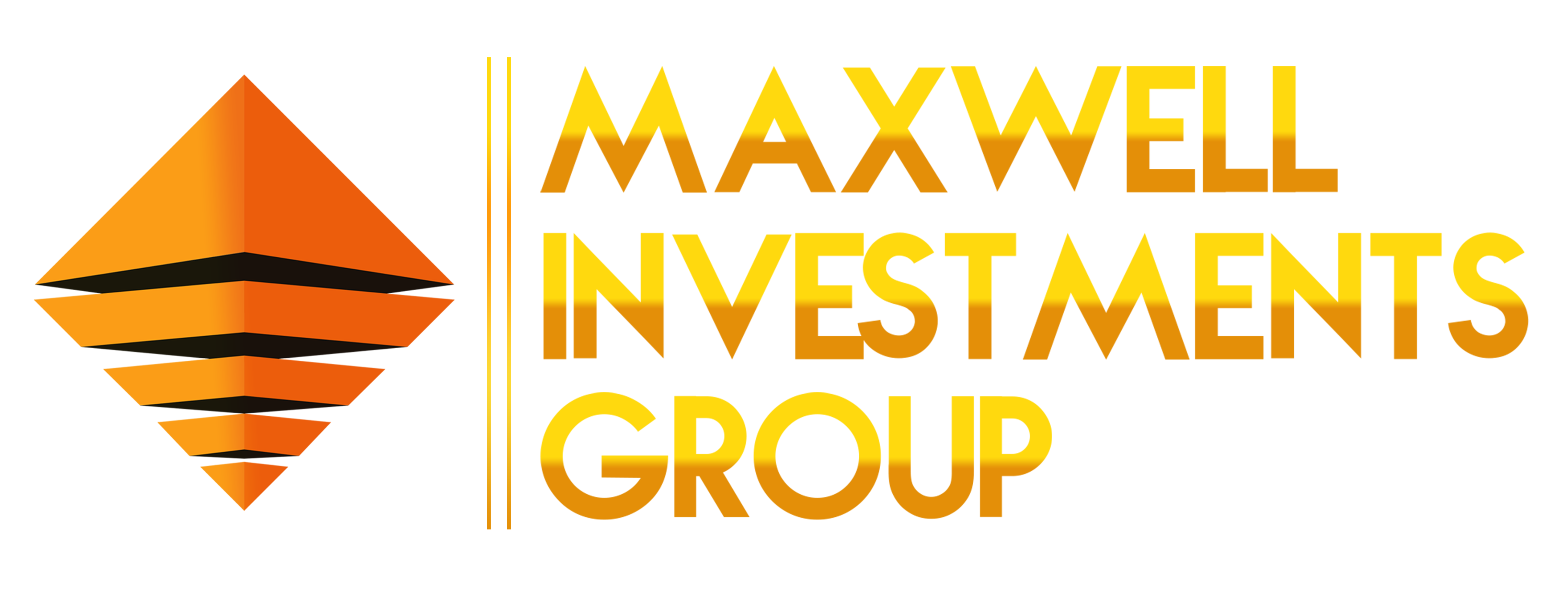
In my opinion, the benefits of blockchain are being paraded as akin to that of cryptocurrencies and while to a large extent that is accurate, from the few conversations I have had over the past weeks, there needs to be an urgent understanding of each of them, and both. For instance, while all cryptocurrencies utilise blockchain technology but not all blockchain technology is cryptocurrency.
In elementary terms, cryptocurrency is a digital currency. Its transactions are all verified and secured using a decentralised system that operates by cryptography.
Cryptocurrencies are not backed by centralised systems and are not controlled by regulating authorities. These currencies are largely autonomous and public, which to some is the best feature, while to some, is the opposite because of the associated risks. As a result of the encryption (cryptographic) technologies they use, these (crypto) currencies act as both virtual accounting systems and also as currencies.
On the off chance you are still a tad confused as to what precisely it may be or how it may be used in real-life settings around you, think of cryptocurrencies as mobile money but on steroids. Think of it as mobile money, but more secure, arguably un-hackable, as anchored and cemented as a US Bullion Depository in Fort Knox – Good luck robbing that!
What precisely is blockchain technology?
Fun fact: blockchain technology is actually older than cryptocurrencies. It is the core or backbone technology that cryptocurrencies run on. It is a decentralised (public) digital book of accounts or ledger.
As IBM explains it, “Blockchain is a shared, immutable ledger that facilitates the process of recording transactions and tracking assets in a business network. An asset can be tangible (a house, car, cash, land) or intangible (intellectual property, patents, copyrights, branding). Virtually anything of value can be tracked and traded on a blockchain network, reducing risk and cutting costs for all involved“
- (What Is Blockchain Technology? – IBM Blockchain | IBM, n.d.)
Blockchain technology has the ability to share data without being copied and has been named among the most secure and innovative technological inventions in the 21 century. Experts in blockchain technology would tell you that there are three pillars it stands on, namely, decentralisation, transparency, and immutability. Payments made using blockchain technology leave virtually no room for the kind of chicaneries employed by centralised financial institutions.
What are cryptocurrencies?
So as you may know already, Bitcoin was one of the very first public and fully operational cryptocurrencies. There are many kinds of cryptocurrencies. The differences depend on how they are coded or designed and the purpose they are supposed to serve. Typically, we can list four of them as some of the primary or primarily used ones by the market. This site helps illustrate this a tad more and proffers more clarification.
“Coins: Coins can be differentiated from altcoins because they are based on their blockchain. On such a blockchain, they act as the native token as well as gas or fuel payment token, although a blockchain can have the gas paid in a different cryptocurrency. A good example is Bitcoin on the Bitcoin and Ether or ETH on the Ethereum blockchain.
In terms of constructing or developing a cryptocurrency, it starts or comes along with developing a blockchain.
Altcoins: Although these can be regarded as coins, they are all understood to be alternatives to Bitcoin as the first cryptocurrency. Also known as shitcoins, apart from Ethereum, most of the first ones were forked from Bitcoin. These include Namecoin, Peercoin, Litecoin, Dogecoin, and Auroracoin.
That said, some altcoins like Ethereum, Ripple, Omni, and NEO have their blockchains. Others do not.
Tokens: Tokens are the digital representations of a particular asset or utility in a blockchain. All tokens can be termed altcoins, but they are differentiated by residing on top of another blockchain and not being native to the blockchain on which they reside.
They are coded to facilitate smart contracts on blockchain networks like Ethereum, and we can transfer some from one chain to another. The tokens are embedded in self-executing computer programs or codes and can operate without a third-party platform. They are also fungible and tradable. They can be used to represent loyalty points and commodities or even other cryptos.
When designing or coding a token, the developer will require following a given template. The developer does not need to edit or code the blockchain from scratch. All they have to do is follow a given standard template. It is faster to come up with a token.“
In order to obtain an even better overview, let us compare these different kinds of cryptocurrencies for perspective.
| Type | Main feature | Examples |
| Utility tokens | Meant to provide access to platform service where they reside. | Funfair, Basic Attention Token, Brickblock, Timicoin, Sirin Labs Token, and Golem. |
| Security tokens | Usage and issuance are governed by financial regulation. | Sia Funds, Bcap (Blockchain Capital), and Science Blockchain. |
| Payment tokens | Used for paying for goods and services inside and outside their own platforms. Almost every crypto falls in this category. | Monero, Ethereum, and Bitcoin. |
| Exchange tokens | Exchange tokens are native to crypto exchange platforms. | Binance Coin or BNB token, Gemini USD, FTX Coin for FTX Exchange, OKB for Okex exchange, KuCoin Token, Uni token, HT for Huobi exchange, Shushi, and CRO for Crypto.com. |
| Non-fungible tokens | Non-fungible tokens are cryptocurrencies with limited issuance that have unique identities and tokens that make them hard to copy or replicate. | Good examples include Logan Paul’s video clips, Twitter Founder Jack Dorsey’s first tweets NFT, EVERYDAYS: The First 5000 Days drawings by Mike Winklemann, better known as “Beeple”, and several crypto kitties. |
(Types Of Cryptocurrency And Tokens With Examples, 2022)
Uses of blockchain and crypto
Owning crypto is akin to buying and storing or trading stocks on Wall Street because one takes a bet on its stability and fiscal security. People who are engaged in buying and holding crypto per se, are doing largely the same thing but with this digital currency. And there lies the risk; many have made millions, and many have lost millions – can you afford to risk it?
On the other side of the proverbial coin, in the case of blockchain technology, the world can find uses for it beyond the confines of cryptocurrencies. The technology is so secure and promotes so much transparency that it can and is actually used in making the areas of banking, gambling, data storage, logistics and supply chain management, for instance, much easier and less susceptible to corruption. The examples of the vast variety of its applications are listed below:
1. Money transfers
The original concept behind the invention of blockchain technology is still a great application. Money transfers using blockchain can be less expensive and faster than using existing money transfer services. This is especially true of cross-border transactions, which are often slow and expensive. Even in the modern U.S. financial system, money transfers between accounts can take days, while a blockchain transaction takes minutes.
2. Financial exchanges
Many companies have popped up over the past few years offering decentralized cryptocurrency exchanges. Using blockchain for exchanges allows for faster and less expensive transactions. Moreover, a decentralized exchange doesn’t require investors to deposit their assets with the centralized authority, which means they maintain greater control and security. While blockchain-based exchanges primarily deal in cryptocurrency, the concept could be applied to more traditional investments as well.
3. Lending
Lenders can use blockchain to execute collateralized loans through smart contracts. Smart contracts built on the blockchain allow certain events to automatically trigger things like a service payment, a margin call, full repayment of the loan, and release of collateral. As a result, loan processing is faster and less expensive, and lenders can offer better rates.
4. Insurance
Using smart contracts on a blockchain can provide greater transparency for customers and insurance providers. Recording all claims on a blockchain would keep customers from making duplicate claims for the same event. Furthermore, using smart contracts can speed up the process for claimants to receive payments.
5. Real estate
Real estate transactions require a ton of paperwork to verify financial information and ownership and then transfer deeds and titles to new owners. Using blockchain technology to record real estate transactions can provide a more secure and accessible means of verifying and transferring ownership. That can speed up transactions, reduce paperwork, and save money.
6. Secure personal information
Keeping data such as your Social Security number, date of birth, and other identifying information on a public ledger (e.g., a blockchain) may actually be more secure than current systems more susceptible to hacks. Blockchain technology can be used to secure access to identifying information while improving access for those who need it in industries such as travel, healthcare, finance, and education.
7. Voting
If personal identity information is held on a blockchain, that puts us just one step away from also being able to vote using blockchain technology. Using blockchain technology can make sure that nobody votes twice, only eligible voters are able to vote, and votes cannot be tampered with. What’s more, it can increase access to voting by making it as simple as pressing a few buttons on your smartphone. At the same time, the cost of running an election would substantially decrease.
8. Government benefits
Another way to use digital identities stored on a blockchain is for the administration of government benefits such as welfare programs, Social Security, and Medicare. Using blockchain technology could reduce fraud and the costs of operations. Meanwhile, beneficiaries can receive funds more quickly through digital disbursement on the blockchain.
9. Securely share medical information
Keeping medical records on a blockchain can allow doctors and medical professionals to obtain accurate and up-to-date information on their patients. That can ensure that patients seeing multiple doctors get the best care possible. It can also speed up the system for pulling medical records, allowing for more timely treatment in some cases. And, if insurance information is held in the database, doctors can easily verify whether a patient is insured and their treatment is covered.
10. Artist royalties
Using blockchain technology to track music and film files distributed over the internet can make sure that artists are paid for their work. Since blockchain technology was invented to ensure the same file doesn’t exist in more than one place, it can be used to help reduce piracy. What’s more, using a blockchain to track playbacks on streaming services and a smart contract to distribute payments can provide greater transparency and the assurance that artists receive the money they’re owed.
11. Non-fungible tokens
Non-fungible tokens, or NFTs, are commonly thought of as ways to own the rights to digital art. Since the blockchain prevents data from existing in two places, putting an NFT on the blockchain guarantees that only a single copy of a piece of digital art exists. That can make it like investing in physical art but without the drawbacks of storage and maintenance.
NFTs can have varied applications, and ultimately they’re a way to convey ownership of anything that can be represented by data. That could be the deed to a house, the broadcast rights to a video, or an event ticket. Anything remotely unique could be an NFT.
12. Logistics and supply chain tracking
Using blockchain technology to track items as they move through a logistics or supply chain network can provide several advantages. First of all, it provides greater ease of communication between partners since data is available on a secure public ledger. Second, it provides greater security and data integrity since the data on the blockchain can’t be altered. That means logistics and supply chain partners can work together more easily with greater trust that the data they’re provided is accurate and up to date.
13. Secure Internet of Things networks
The Internet of Things (IoT) is making our lives easier, but it’s also opening the door for nefarious actors to access our data or take control of important systems. Blockchain technology can provide greater security by storing passwords and other data on a decentralized network instead of a centralized server. Additionally, it offers protection against data tampering since a blockchain is practically immutable.
14. Data storage
Adding blockchain technology to a data storage solution can provide greater security and integrity. Since data can be stored in a decentralized manner, it will be more difficult to hack into and wipe out all the data on the network, whereas a centralized data storage provider may only have a few points of redundancy. It also means greater access to data since access isn’t necessarily reliant on the operations of a single company. In some cases, using blockchain for data storage may also be less expensive.
15. Gambling
The gambling industry can use blockchain to provide several benefits to players. One of the biggest benefits of operating a casino on the blockchain is the transparency it provides to potential gamblers. Since every transaction is recorded on the blockchain, bettors can see that the games are fair and the casino pays out. Furthermore, by using blockchain, there’s no need to provide personal information, including a bank account, which may be a hurdle for some would-be gamblers. It also provides a workaround for regulatory restrictions since players can gamble anonymously and the decentralized network isn’t susceptible to government shutdown. (Levy, 2022)
♕ —- ♕ —- ♕ —- ♕ —- ♕
References
What is Blockchain Technology? – IBM Blockchain | IBM. (n.d.). What Is Blockchain Technology? – IBM Blockchain | IBM. https://www.ibm.com/topics/what-is-blockchain
Types Of Cryptocurrency And Tokens With Examples. (2022, July 6). Software Testing Help. https://www.softwaretestinghelp.com/types-of-cryptocurrency/
Levy, A. (2022, July 5). 15 Applications for Blockchain Technology. The Motley Fool. https://www.fool.com/investing/stock-market/market-sectors/financials/blockchain-stocks/blockchain-applications/
♕ —- ♕ —- ♕ —- ♕ —- ♕
I hope you found this article insightful and enjoyable. Subscribe to the ‘Entrepreneur In You’ newsletter here: https://lnkd.in/d-hgCVPy.
I wish you a highly productive and successful week ahead!
♕ —- ♕ —- ♕ —- ♕ —- ♕
Disclaimer: The views, thoughts, and opinions expressed in this article are solely those of the author, Dr. Maxwell Ampong, and do not necessarily reflect the official policy, position, or beliefs of Maxwell Investments Group or any of its affiliates. Any references to policy or regulation reflect the author’s interpretation and are not intended to represent the formal stance of Maxwell Investments Group. This content is provided for informational purposes only and does not constitute legal, financial, or investment advice. Readers should seek independent advice before making any decisions based on this material. Maxwell Investments Group assumes no responsibility or liability for any errors or omissions in the content or for any actions taken based on the information provided.


